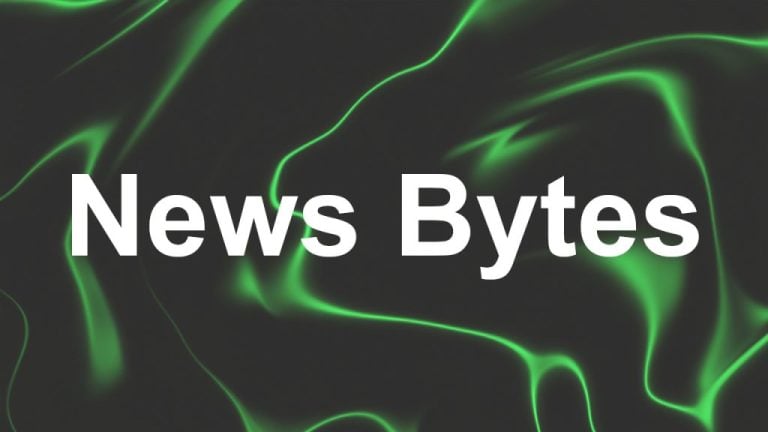 The rising trend of “re-staking” has driven significant cryptocurrency investments into platforms that reward users for locking up their tokens. Leading this movement is Seattle-based startup Eigenlayer, which secured $100 million in funding from Andreessen Horowitz’s crypto arm in February. Eigenlayer has attracted $18.8 billion worth of crypto to its platform from less than $400 […]
The rising trend of “re-staking” has driven significant cryptocurrency investments into platforms that reward users for locking up their tokens. Leading this movement is Seattle-based startup Eigenlayer, which secured $100 million in funding from Andreessen Horowitz’s crypto arm in February. Eigenlayer has attracted $18.8 billion worth of crypto to its platform from less than $400 […]
Buterin has advocated preserving Ethereum consensus minimalism and not overloading validators with other things.
Ethereum co-founder Vitalik Buterin has published a lengthy blog post warning of the dangers of “stretching” Ethereum's consensus past its core functions of validating blocks and securing the network.
Ethereum consensus is the process whereby blocks are validated by the proof-of-stake mechanism implemented in September 2022 with “the Merge.”
In a May 21 blog post titled “Don’t overload Ethereum’s consensus,” Buterin warned that using Ethereum’s network consensus for other things could bring “high systemic risks to the ecosystem and should be discouraged and resisted.”
The Ethereum co-founder was essentially promoting the preservation of the blockchain’s minimalism.
Don't overload Ethereum's consensus:https://t.co/07tzyCrZcJ
— vitalik.eth (@VitalikButerin) May 21, 2023
Buterin noted that over the years, a number of proposals or ideas had floated around that suggested using the Ethereum social consensus for other purposes, such as price and data oracles, re-staking initiatives and using layer-1 soft forks to recover layer-2 projects should they have issues.
“There is a natural urge to try to extend the blockchain’s core with more and more functionality because the blockchain’s core has the largest economic weight and the largest community watching it, but each such extension makes the core itself more fragile.”
Buterin said that a certain subset of these techniques could bring “high systemic risks” to the ecosystem, such as bugs or an intentional 51% attack.
Some high-risk examples include creating ETH/USD price oracles in which ETH (ETH) holders or validators can be bribed to vote on, which may result in a “fork out the bad participants' money” if there is disagreement.
However, he acknowledged a need for better oracles, proposing a case-by-case approach because various problems are “inherently so different” from each other.
Overall, Buterin said that any expansion of the “duties” of Ethereum's consensus increases the costs, complexities, and risks of running a validator.
Related: Buterin weighs in on zk-EVMs’ impact on decentralization and security
Application-layer projects “taking actions that risk increasing the ‘scope’ of blockchain consensus to anything other than verifying the core Ethereum protocol rules,” should be treated with caution, he said, summarizing:
“We should instead preserve the chain’s minimalism, support uses of re-staking that do not look like slippery slopes to extending the role of Ethereum consensus, and help developers find alternate strategies to achieve their security goals.”
The Ethereum consensus mechanism switched from proof-of-work to proof-of-stake in September last year. Additionally, staked Ethereum has only just been released for withdrawal with the Shapella upgrade on April 12. This explains the increased scrutiny of validator roles and security risks on the world’s largest smart contract network.
Magazine: ‘Account abstraction’ supercharges Ethereum wallets: Dummies guide

The re-staking collective aims to address Ethereum validator economic incentives.
A new protocol that allows Ethereum validators and stakers to “re-stake” their assets onto other emerging networks has just launched on testnet.
The mainnet launch of the EigenLayer protocol is not expected until Q3, however, and testing will be phased in three stages to onboard various participants into the ecosystem. The first stage is using Ethereum’s Goerli testing network.
The project has some serious backing and announced $50 million in a Series A funding round in late March led by crypto venture firm Blockchain Capital, along with Coinbase Ventures, Polychain Capital, Electric Capital and Finality Capital Partner.
EigenLayer aims to become a decentralized marketplace for Ethereum node operators and validators to earn fees on additional services. It allows them to restake assets they received in exchange for staking Ether on platforms such as Lido (stETH) and RocketPool (rETH). The assets can be reused to validate and secure other networks, such as sidechains or non-EVM blockchains.
According to the white paper, EigenLayer also has plans to enable restaking for ETH withdrawn from the Beacon Chain following the Shapella upgrade.
“Ethereum validators can set their beacon chain withdrawal credentials to the EigenLayer smart contracts, and opt-in to new modules built on EigenLayer.”
The protocol aims to address issues with validator economic incentives. EigenLayer founder Sreeram Kannan said that facilitating the moving and re-staking of ETH onto other networks would incentivize validators and stakers with additional yields and allow smaller networks to grow securely.
We are excited to announce the release of the testnet for the first stage of the EigenLayer protocol, which supports liquid and native restaking.
— EigenLayer (@eigenlayer) April 6, 2023
Please read the full details here: https://t.co/1eoriZOcwo
1/8 pic.twitter.com/xLs3CC2EOK
In late March, Ethereum co-founder Joseph Lubin said that “[t]he Eigen Labs team is at the forefront of some of the most exciting work happening in Ethereum.”
Related: MetaMask Institutional unlocks solo ETH staking marketplace
“Eigenlayer is a new paradigm for fostering protocol-centric innovation through a programmatic, decentralized trust marketplace,” he added. High praise, but it’s worth noting that Lubin’s Ethereal Ventures fund has invested in EigenLayer.
There are currently 17.9 million ETH staked on the Beacon Chain, according to the Ultrasound.Money tracker. At current prices, this is valued at around $33.6 billion, which is more than the entire market capitalization of USDC. It represents almost 15% of the entire Ethereum supply.
Magazine: ‘Account abstraction’ supercharges Ethereum wallets: Dummies guide